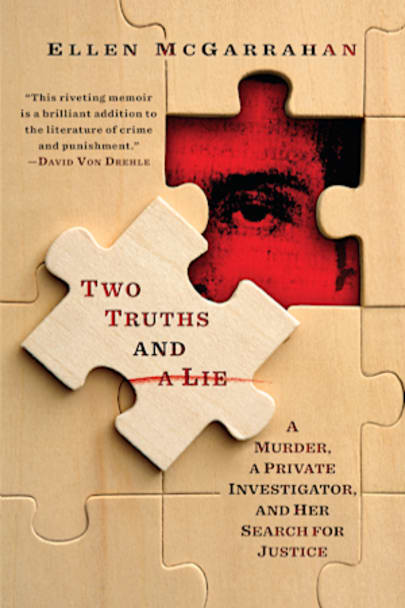NEW YORK TIMES BOOK REVIEW EDITORS’ CHOICE • In this “spellbinding memoir” (The Washington Post), a private investigator revisits the case that has haunted her for decades and sets out on a deeply personal quest to sort truth from lies.“Beautifully written.”—Heather Ann Thompson, Pulitzer Prize–winning author of Blood in the WaterIn 1990, Ellen McGarrahan was a young reporter for the Miami Herald… 1990, Ellen McGarrahan was a young reporter for the Miami Herald when she covered the execution of Jesse Tafero, a man convicted of murdering two police officers. When it later emerged that Tafero may have been innocent, McGarrahan was appalled by her unquestioning acceptance of the state’s version of events. The revelation propelled her into a new career as a private investigator.
Decades later, McGarrahan finally decides to find out the truth of what really happened in Florida. Her investigation plunges her back into the Miami of the 1960s and 1970s, a dangerous world of nightclubs, speed boats, and cartels, all awash in violence. She combs through stacks of court files and interviews everyone involved in the case. But even as McGarrahan circles closer to the truth, the story of guilt and innocence becomes more complex, and she gradually discovers that she hasn’t been alone in her need for closure. Because whenever a human life is forcibly taken—by bullet, or by electric chair—the reckoning is long and difficult for all.
A fascinating glimpse into the mind of a private investigator, Two Truths and a Lie is ultimately a deeply personal exploration of one woman’s quest to find answers in a chaotic world.
more



Journalist turned private investigator turned author Ellen McGarrahan covered and attended the execution of Jesse Tafero, 43, in May 1990 in Stark, Florida. Tafero, convicted for the murders of two policemen, did not die easily. The electric chair malfunctioned, sending out flames and smoke, and required three jolts of electricity over the course of seven minutes rather than the usual one jolt and one minute to kill the prisoner. It would haunt McGarrahan for decades to come. So much so, that after she quit her job as a journalist and became a private investigator she decided to look into the case and determine for herself whether, as she suspected, an innocent man had died at the state’s hands.
The truth of what happened the day the police officers were murdered will most likely never be known in full, but there appear to have been sufficient contradictions in the evidence and testimonies associated with the case that it seems odd to this reader that the prosecution was able to prove Tafero’s guilt beyond a reasonable doubt to a jury.
The read overall is a bit uneven; steady and even gripping in some parts, a bit boggy and repetitive in others; but that’s probably the way real investigations go. Though the basis of the book is the guilt or innocence of Tafero, the broader issue on the board is the death penalty itself and whether it provides justice.
My thanks to NetGalley and Random House for permitting me access to an advanced copy of the book which is scheduled for publication on 2/2/21. Opinions stated in this review are my own.